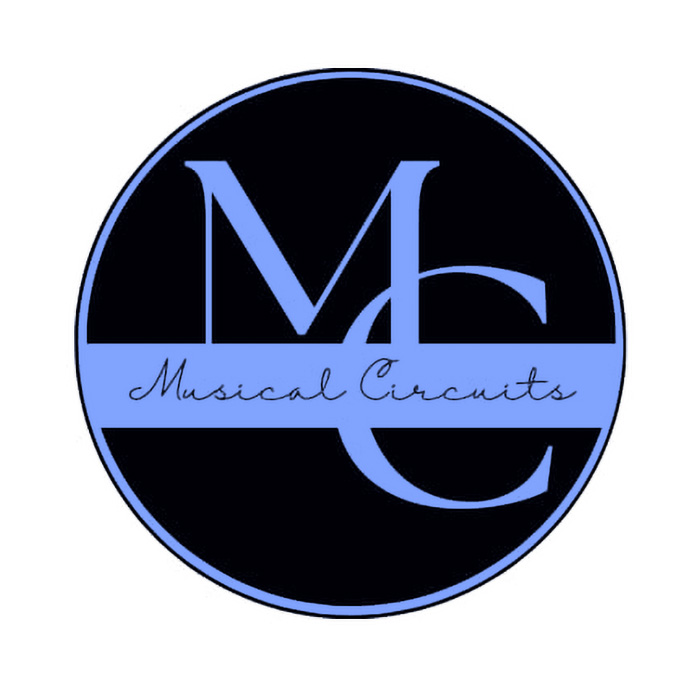 The Musical Circuits
The Musical Circuits
Designed for Musical Humans of All Ages,
at Any Level, on Any Instrument!
By Zach West
The Eight Musical Circuits
From Circuit 1 to Circuit 8, Do to Do, and Tonic to Octave
From Physical Body to Dream Vessel
I first stumbled on the Eight Circuit Model when a friend advised that I read a book called Prometheus Rising by some guy named Robert Anton Wilson. I had just finished The Illuminatus Trilogy, and my friend wanted me to experience some of Robert Anton Wilson’s non-fiction. I was curiously drawn to Wilson for a few reasons. One of the more amusing reasons was the synchronicity that RAW’s initials were the same as my father’s (Robert Addison West), who is also an amazing man of high intelligence.
In Prometheus Rising, Wilson develops the Eight Circuit Model of Consciousness that was created by Timothy Leary. I became instantly fascinated by the Eight Circuit Model, as Wilson explained it. I found myself enjoying the exercises at the end of every chapter of Prometheus Rising, and loving the results I was getting. Then I stumbled onto the work of Antero Alli! I bought Angel Tech and soaked it up like a sponge. Then I took Antero Alli’s class online at the Maybe Logic Academy, which led to the honor of having my art published in Alli’s book The Eight Circuit Brain!
I have become completely hooked on the Eight Circuit Model and have been using it obsessively since 2005. But, as a creative type, I wondered what my contribution to this model might look like. After years of study and contemplation I came to realize that a curriculum for the musical human was the answer. Now, after teaching what I call The Musical Circuits Curriculum to hundreds of students of all ages and levels of experience, I understand how useful these “Circuits” can be for budding young musicians, as well as professionals. Children seem to take to the Eight Circuit Model better than I had ever expected, and I wonder why it has been geared mainly towards adults until now.
Music became an imaginative and creative way of exploring The Eight Circuits, and the Eight Circuit Model helped me structure a series of lessons for the students I was teaching. The curriculum I have created for my students combines the Eight Circuit Model of Consciousness with the awesome power of harmony, melody, rhythm, and the traditional eight note scale.
One of the major reasons I felt drawn to add to the Eight Circuit Model lexicon was due to the similarities it shares with a musical Octave. I knew quite a bit about Pythagoras’ theory that the Occidental musical scale follows a mathematical cycle based on the interval of an octave. As a musician, I was intrigued by the idea that the Eight Circuit Model was loosely connected to the Law of Octaves. This “law” has cropped up a few times throughout history. The more I investigated the idea that important aspects of life on planet earth follow an eightfold pattern, the more I found. The eights just kept coming, as synchronicities often do.
Octaves abound! From Pythagoras’ Law of Octaves to Newland’s Periodic table, through the visions of Tesla, into the design of the modern chess board, from the I Ching hexagrams, to the Beatles song Eight Days a Week, from the octagonal patterns in Buddhist mandalas, to the sand patterns of the experiments in Cymatics (do a quick Youtube search), from the eight notes of an Occidental scale to a profoundly awesome article by Wilson called The Octave of Energy, and on and on.

Click here for a Cymatic experiment on YouTube
The Octave of Energy at deoxy.org
Disclaimer:
It is not my purpose here to get lost in
all the wonders of the number eight.
It is my intention to illustrate
how the Eight Circuit Model of Consciousness
follows a similar pattern to the Eight notes in a musical scale.
Putting all these corresponding eights aside, my job is to create a curriculum for students of music to practice.
Before we get into the Musical Circuits, I will give a quick description of the Eight Circuit Model of Consciousness as I understand it. Circuit One is physical and rooted in safety and physical play. Circuit Two is emotional and concerned with expression and territoriality. Circuit Three is conceptual and focused on clarity and vocabulary. Circuit Four is social and gathers people together through culture. Circuit Five is hedonic and rooted in bliss. Circuit Six is electric and expands our imaginative faculties. Circuit Seven is genetic and unleashes inspired synchronous archetypes. Circuit Eight is cosmically chaotic and oozes paroxysms from an unbounded void (?).
I will now show how this model applies to music education. The Musical Circuit Curriculum advises that a student begin by embarking on a journey through Eight Musical Circuits in a step wise fashion, like the way a beginner vocalist would practice a major scale (CDEFGABC ~ CBAGFEDC). In its simplest form this step wise jaunt up and down the Musical Circuits would have the student begin by connecting their body to their instrument (Circuit 1). Then they would find expression for their current mood by playing with volume and speed (C2). Then they might practice a scale, a simple melody, or a chosen rhythm (C3). Then, if possible, they would play the scale, melody, or rhythm with another person, or for an audience of one or more people (C4). Next, they might wander aimlessly on their instrument and simply enjoy the blissful sounds reverberating through their senses (C5). The student can then start to improvise and perhaps even surprise themselves with spontaneous clairaudient expression (C6). After that, they can attempt to tell an inspired narrative with their instrument that a person from another culture might intuitively understand (C7). Finally, they play music before sleep in the hope that their music will seep into their dreams and further develop their motor skills in dreamtime (C8/C1 again). These are just the tip of the iceberg when it comes to accessing each Circuit through musical exploration.
The student can explore other creative ways to “play with the Circuits” like a more seasoned pianist might play or compose a melody. After all, a melody is simply a scale played creatively.
A fun way to “play with the Circuits” comes from Antero Alli’s theory that C1-4 behave as a support system for the altered states of C5-8. In Musical jargon this is known as “bouncing” between the interval of a fifth. For this, I would give my student exercises for C1 and C5 to practice separately (like a melody), and then an exercise for combining C1 and C5 together (like a chord). For more seasoned students I’ll add C3 as a mediant between the C1 and C5, which creates a triad or chord, and creates a harmonic structure.
Sample Exercise for a Triad:
· C1 – humming while playing some steady Body Percussion.
· C3 – syllabic tapping and transcribing the rhythm created out of the syllables.
· C5 – enjoying the somatic bliss of the humming and tapping together.
Another way to “play with the Circuits” is to choose a simple melody and work through the Circuits in the same order that the notes in the melody follow. Very few melodies use all 8 notes of a scale. Using an established song to work through the Musical Circuits is a fun way to explore a few Circuits at a time.
One of my favorite songs to teach students is Hot Crossed Buns. This melody is a great one to start with because it focuses on C1, C2, and C3 (Do, Re, Mi). I teach them the melody to play on their chosen instrument, and then give them exercises for the corresponding Musical Circuits.

I would give them a Circuit Three exercise (compose a simple melody consisting of three or four notes), a Circuit Two exercise (play the melody loud/quiet ~ fast/slow and toggle between opposites for two minutes), and a Circuit One exercise (play the melody over and over while holding a comfortable position for two minutes).
Using the Hot Crossed Buns melody would have them compose a total of three melodies (C3), play each of those melodies loud, quiet, slow, and fast for a couple minutes (C2), and notice the way those melodies resonate with their body for a couple minutes (C1). During the “one a penny, two a penny” section they would focus on playing comfortably for a total 8 minutes and toggling between loud/quiet/fast/slow for another 8 minutes. The whole exercise should take about a half hour. If the students did this every day for a month they would improve exponentially at music and be all the healthier for it. If you’d like more clarity on this exercise, please reach out to me.
 Circuits!
Circuits!
“The characteristics of rhythm are continuity and repetition.”
– Dalcroze
Continuity and repetition are also the characteristics of a circuit!
At this point it would be a good idea to define the term Circuit for the purpose of this curriculum. A circuit can be defined as a cyclic path that causes and sustains some sort of event. This can apply to sending and receiving information or energy.
Timothy Leary describes the Circuit Model using three stages of a communication process.
Message: What the sender is relaying to the receiver.
1 – Communication channel: The process used to transmit a message or motor movement.
2 – Decoding: How the receiver interprets the message or movement.
3 – Feedback: A response is sent back to the sender.
For example, a musician can compose a melody or song and send it to another musician via some type of notation, a recording, or play it for them in real time. They can then send this to an audience if they choose. The movement necessary to make music is transmitted and often causes movement in the receiver, such as dancing, head bobbing, and even spontaneous convulsions (depending on the genre). Mimicking movement is a primary way children learn motor skills. This is true for walking, talking, singing, or playing an instrument.
Applied Musical Circuitry
Musical Circuits are essentially metaphorical circuits. So, the path, or movement of energy, is meant to sustain a series of musical exercises that focus on melody, rhythm, and harmony.

There are multiple ways that the concept of a circuit applies to music. Music is cyclical! A melody follows an established contour and toggles between repetition and variation. A musical cycle sustains and circulates a Sonic Energy Flow! Depending on the form, many pieces of music follow a circuitous series of sonic events. A theme is introduced and flows through a series of variations that recapitulate and often end in a similar tonality to the introduction. Like the Hot Crossed Buns example!
The model of the circuits is an apt metaphor for the stages that are encompassed by the Musical Circuit Curriculum. This curriculum follows the structure of a musical scale. A musical scale played in sequence resembles a circuit in that it starts and continuously recapitulates at similar points, known as octaves. An octave is simply eight notes higher in pitch from the first note of the scale. The first and eighth note are both called the same thing, the root or tonic of the scale. Melodies can travel along a path using any or all the notes between octaves.
To take this metaphor further, in the Musical Circuit Curriculum, the musician’s intention can act as the power source that instigates movement. Their motivation toward development can become the energy that sustains the flow through each Musical Circuit. The curriculum might feel like the path/wire that contains and insulates the energy current. And an optimistic imagination becomes the circuit breaker.
Sample Example for Circuit One: In Circuit One the musician might begin by exploring the feeling of a steady pulse by laying on their back and feeling their heartbeat (initiating). Then they can slowly rise and begin stomping or walking (sustaining). The steady rhythmic pulse created by this type of exercise broadcasts bio-chemical responses through their entire body. They can then lie back down and return to feeling their heartbeat, and perhaps do the whole exercise again and again. This is one of many ways to complete and sustain Circuit One.
Predictable cycles create stability!
Repeat, Repeat, Repeat!
 Applying the Sonic Octave
Applying the Sonic Octave
Let’s define some musical terms for the sake of correspondence. In western music education students are tasked with learning scales, which can be categorized as modes. Major and minor are the most common, but there are five more in the classical western cannon all having Greek names that come from ancient tribes.
Think of a scale like a staircase or ladder. The steps of the scale can be given letters, numbers, or syllables, and each step can also be the root of a chord. A chord is a combination of several notes played simultaneously.
The letters change depending on the key the scale is in. For example, a tune might be in C major, and the scale would follow in semi-alphabetical order from C to C (for reasons that are too extensive to elaborate on here, the musical alphabet only uses the first 7 letters of the English alphabet). Attaching a syllable (Do, Re, Mi, etc.) to a note of the scale is called, Solmization.” The solmization syllables can be either vowels, or a consonant followed by a vowel. This is known as Solfege and is the most familiar solmization to people in the West. The numbers refer to the order of any scale a musician chooses to play with.
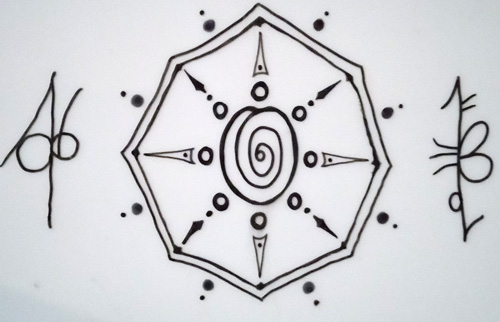
The scale degrees, the chords, and the solmization of a musical scale fall into an eight-fold structure, the eighth being the same as the first, but at a higher frequency, as noted above. Through the combining of notes, chords and more complex musical structures can be built.
Through the Musical Circuit Curriculum students can experience the Circuits like a melodic tune, or they can experience the Circuits like a harmonic chord progression.
Further Elucidation on Similarities between The Musical Circuits Curriculum and The Eight Circuit Model
With a touch of ingenuity, you can use the following descriptions to create more exercises for each Circuit.
Circuit One – Body Percussion and Vocal Sounds (humming and drumming)
• Inner ear – sound conduction and balance (head tilts, locomotor throughout the space)
• Sleep habits, dietary habits, Tonal Nutrition, posture
• Forward or Back ~ phillia or phobia, exploring or shying away, reaching or hiding
Circuit Two – Musical Expression and Toggling between Emotional polarities
• Muscle control – jumping or sliding between loud/quiet/fast/slow/high/low/calm/excited etc…
• Mood, energy, passion, breath work and the inhale exhale exchange
• Up or Down ~ straight or slouched, bold or shy, rising or falling
Circuit Three – Solfege Syllables and Rhythmic Notation
• Skill Building – creating syllabic sequences and singing scales with hand signs
• Reading and writing, transposing, and transcribing, songs, forms, and chanting
• Left or Right ~ ambidexterity, correct or incorrect, mistakes and happy accidents
Circuit Four – Collaboration and Contribution
• The Musical Personality – Combing Circuit One through Three; comfortable, confident, clear, and cooperative
• Part Singing, Harmonic and Rhythmic Accompaniment, Rounds/Canons/Quodlibets
• Playing in a group for an audience
• 3D Space ~ The Cube: forward, back, up, down, side to side
Circuit Five – Having Fun and Letting Go
• Centering Exercises – intoning with vowels, resonating in specific parts of the body
• Exploring charisma, unfettered allure and attraction, music as a magnet
• The Central Chanel ~ tuning the Spinal String
Circuit Six – Creativity and Imagination
• Probability Engineering – imagining musical events into reality, creating deja vu
• Improvisation, anticipating spontaneity, Synesthesia, and clairaudience
• The Electro-energetic Antennae ~ the Relativistic Auric Aural Spectrum
Circuit Seven – Telling a Universal Story and Receiving Inspiration
• The Consciousness Radiation Helix – Archetypal Accessibility, Musical Mandalas
• Art prompts, poetic themes, and cross-cultural myths for musical insight
• Synchronicity, Planetary Frequencies, Cymatics
Circuit Eight – Downloading Music from Hollowness and Beyond
• Dream Music – Practice before sleep, this enhances our motor development (C8/C1)
• Lucid Dreaming, The Vacuum Fluctuation Meditation
• The Sound of Silence ~ Atomic Cosmic Resonance and the Spiritual Reed
The First Four Musical Circuits are concerned with developing the Music Personality!
The Second Four Musical Circuits aid in unleashing Imagination and Creativity (I2C2)!
In Conclusion…
The Eight Circuit Model and the eight notes in western music belong together. They act like doppelgangers living lives separated by oceans of metaphor. Through the Musical Circuit Curriculum these two octaves will meet in the human mind and dance until exhaustion sets in. The circuits become musical and musical tones take on circuitous expression.
My hope is that I have opened the door to new ways to enjoy the Eight Circuit Model. The same way a kid enjoys exploring the bars on a xylophone, sliding stepwise up and down, jumping from note to note and circuit to circuit, taking a melodic adventure. Enjoying the harmonious experience of accessing multiple circuits simultaneously. Adjacent to this hope, is a dream that students of music will find new avenues toward self-discovery and self-acceptance through the Eight Circuits and the work of authors like Timothy Leary, Robert Anton Wilson, and Antero Alli.
The Eight Circuit Model of Consciousness has had a profound impact on my life, and I feel gratitude to Leary, Wilson, and Alli for what they have produced. I am equally grateful for the students who continue to work through my curriculum with me.
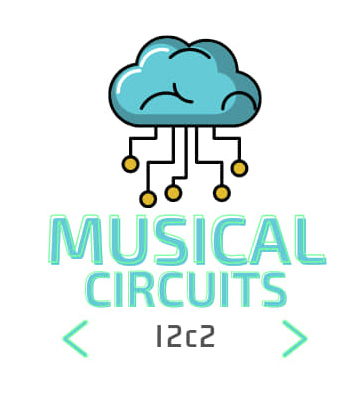
The Musical Circuit Curriculum acts as a Compass. It guides the musical human through a journey towards heroic self-discovery and acceptance!
Take a journey through the Musical Circuits by visiting zachwesti2c2.com and signing up for the complete package!
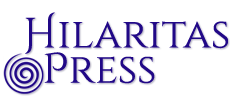


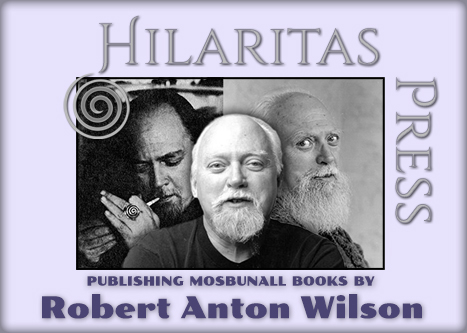


Leave a Reply
Want to join the discussion?Feel free to contribute!